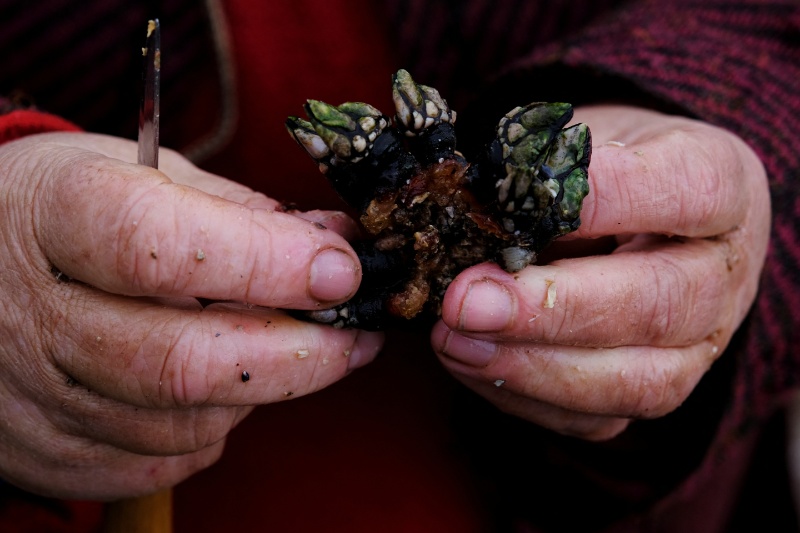CORME, Spain — On the craggy rocks on northwestern Spain’s treacherous Costa da Morte (Death Coast), wetsuit-clad fishermen dodge crashing waves as they pick barnacles, a prized Christmas delicacy facing decline due to climate change and other factors.
Fetching up to 200 euros ($208) per kilogram (2.2 pounds) during the holiday season, the gooseneck barnacle from the Galicia region has long been treasured by Spaniards for both its flavor and difficulty to harvest.
However, the rise in sea temperatures driven by climate change has severely affected barnacle habitats, as they thrive in icy waters. A recent study by the University of Vigo also linked changing wave patterns to lower quality in the shellfish.
Israel Martinez, an auctioneer in the A Coruna fish market, said that there used to be double or triple the number of barnacles just 10 years ago.
Despite state regulations – such as limiting daily harvests to 7 kg per fisherman – illegal fishing has surged due to the barnacles’ high value.
Licensed percebeiros, or barnacle pickers, have called for increased policing of the coast to deter poachers.
Their job is classified as a risky profession due to the adverse work conditions.
“The percebeiro trade on the Costa da Morte is dying. This is due to climate change, absurd laws, illegal fishing and a lack of workers,” 36-year-old Roberto Vidal, who started out as a percebeiro at 16, told Reuters.
He said there used to be between 100 and 200 percebeiros in his town of Corme. Now, there are around 30.
Fellow percebeiro Serafin Rodriguez said that future generations would be unable to follow in his footsteps due to declining barnacle populations.
($1 = 0.9616 euros)
—Writing by David Latona; Editing by Andrei Khalip and Sharon Singleton

